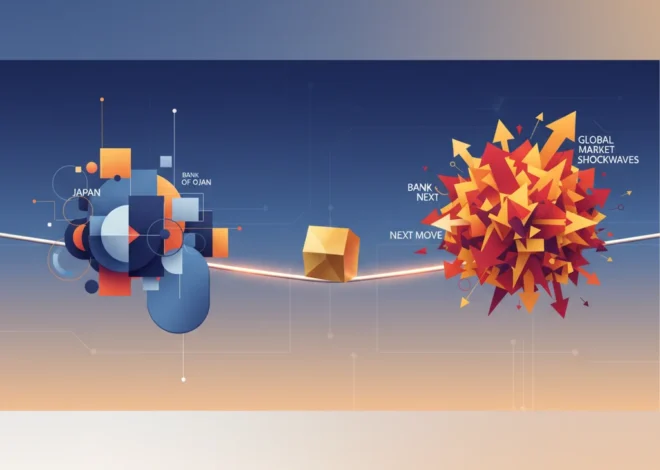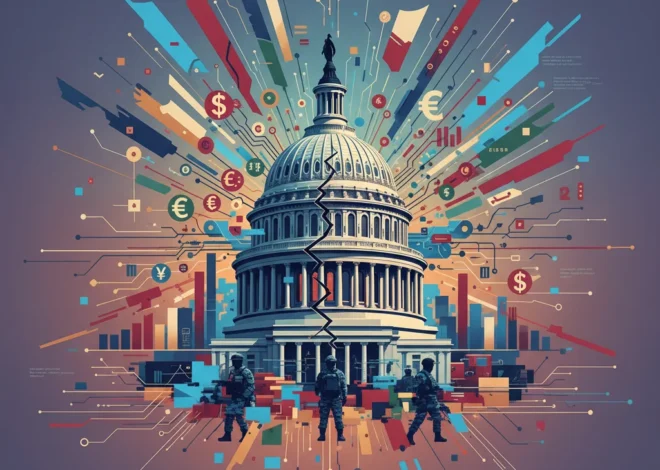
Financial Déjà Vu: Are Stablecoins Repeating a 19th-Century Banking Crisis?
The spectacular collapse of the Terra/Luna stablecoin ecosystem in May 2022 felt, to many, like a uniquely digital-age catastrophe. Billions of dollars in value evaporated in days, a high-tech tragedy born of complex algorithms and the frenetic world of decentralized finance. But what if this failure wasn’t a “black swan” event unique to the world of blockchain? What if it was simply the latest chapter in a very old story of financial fragility?
In a compelling letter to the Financial Times, Alex J. Pollock of the Mises Institute argues just that. He suggests that to understand the future of stablecoins, we must look back—not just a few years, but over 150 years—to a turbulent period in American banking known as the “Free Banking Era.” This historical parallel provides a powerful lens through which we can analyze the inherent risks in today’s fintech landscape and understand why, without caution, history is poised to repeat itself.
This article delves into that parallel, exploring the timeless economic principles that govern both 19th-century banknotes and 21st-century stablecoins. We’ll examine why the Terra/Luna collapse was predictable, analyze the risks lurking within different stablecoin models, and discuss what investors, regulators, and business leaders must understand to navigate the future of digital finance.
Understanding the Promise and Peril of Stablecoins
Before we travel back in time, let’s establish a clear understanding of what stablecoins are. In the volatile world of cryptocurrencies, where prices can swing dramatically, stablecoins are designed to be an anchor. Their primary purpose is to maintain a stable value, typically pegged 1-to-1 with a major fiat currency like the U.S. dollar.
This stability makes them a crucial piece of infrastructure in the digital asset economy. They act as a bridge between the traditional financial system and the world of crypto, facilitating trading, lending, and payments without the price volatility of Bitcoin or Ethereum. However, the method used to maintain this peg is where the risk lies. Not all stablecoins are created equal.
Here is a breakdown of the three primary types of stablecoins and their fundamental differences:
| Stablecoin Type | Pegging Mechanism | Primary Risk Factor | Prominent Example |
|---|---|---|---|
| Fiat-Collateralized | Backed 1:1 by real-world assets (cash, U.S. Treasuries) held in a reserve. For every digital coin, there is a corresponding dollar (or equivalent) in a bank. | Transparency & Solvency Risk: Are the reserves truly there? Are they high-quality, liquid assets? A lack of transparent audits can create doubt. | Tether (USDT), USD Coin (USDC) |
| Crypto-Collateralized | Backed by a surplus of other cryptocurrencies (e.g., Ethereum) held in smart contracts. These are typically over-collateralized to absorb price shocks. | Volatility & Liquidation Risk: A sharp crash in the price of the underlying crypto collateral can trigger forced liquidations and potentially break the peg. | Dai (DAI) |
| Algorithmic | Not backed by direct collateral. Uses algorithms and smart contracts to manage supply and demand of the stablecoin and a partner token to maintain the peg. | Reflexivity & “Bank Run” Risk: The entire system relies on confidence. Once trust is lost, it can enter a “death spiral,” as the mechanism to defend the peg collapses. | TerraUSD (UST) – (Now defunct) |
A History Lesson from the “Free Banking Era”
Now, let’s step back to the period between 1837 and 1863 in the United States. With no central bank, states allowed almost any entity to apply for a banking charter and, crucially, to issue its own private banknotes. These notes, much like today’s stablecoins, were supposed to be redeemable on demand for a stable asset—in this case, specie (gold or silver coins). As the Federal Reserve History project notes, this era was characterized by a “bewildering variety of notes” and significant financial instability.
The problem, as Pollock points out in his letter, was that many of these banks were “uncollateralised” or “fraudulently collateralised.” They issued more notes than they had gold or silver to back them up. These notes were, in economic terms, “run-prone liabilities.” As soon as depositors suspected a bank couldn’t honor its promise of redemption, they would rush to cash in their notes, triggering a classic bank run that would inevitably lead to the bank’s collapse.
The parallels to the stablecoin world are striking:
- Private Money Creation: Both free banks and stablecoin issuers create a form of private money that competes for public trust.
- The Promise of Redemption: A 19th-century banknote promised redemption for gold; a modern stablecoin promises redemption for a U.S. dollar.
- The Centrality of Collateral: The entire system’s stability hinges on the quality, quantity, and transparency of the assets backing the issued liability.
The Terra/Luna model was the 21st-century equivalent of a free bank with no gold in its vault. It was an uncollateralised liability, relying solely on an algorithmic promise and faith in its sister token, LUNA. When that faith wavered, the digital bank run began, and the entire edifice crumbled, just as its 19th-century predecessors did.
Beyond the Hype: 3 Critical Truths Shaping the Future of Finance
The Modern “Bank Run”: Deconstructing the Terra Collapse
The collapse of TerraUSD (UST) wasn’t just a failure; it was a textbook bank run played out at the speed of the internet. UST was an algorithmic stablecoin that maintained its $1.00 peg through a relationship with a volatile governance token called LUNA.
Here’s a simplified look at the mechanism that was supposed to ensure stability:
- If UST’s price fell below $1.00, users could “burn” (destroy) 1 UST to mint $1.00 worth of LUNA. This arbitrage opportunity was meant to reduce the supply of UST, pushing its price back up to $1.00.
- If UST’s price rose above $1.00, users could burn $1.00 worth of LUNA to mint 1 UST, increasing the supply and bringing the price back down.
This system worked as long as there was faith and sufficient demand for LUNA. However, in May 2022, a few large withdrawals from UST’s primary DeFi platform, Anchor Protocol, initiated a crisis of confidence. As reported by Reuters, this triggered a panic. Traders rushed to redeem their UST for LUNA, but the selling pressure was too immense. This created a hyper-inflationary “death spiral”:
- Massive amounts of UST were burned to mint new LUNA.
- This flooded the market with LUNA, crashing its price.
- As LUNA’s price plummeted, even more LUNA had to be minted to redeem each UST, further accelerating the price crash.
- Confidence was shattered, the peg was irrevocably broken, and both tokens became virtually worthless.
This event demonstrated that an algorithmic stablecoin is the most extreme example of a “run-prone liability.” Its value is derived entirely from the belief in its own mechanism—a mechanism that proved tragically fragile under pressure.
Benjamin Franklin's Ghost in the Modern Economy: Reviving the Case for a Land Value Tax
Are Fully-Backed Stablecoins Safe?
Given the fate of algorithmic stablecoins, many investors have fled to the perceived safety of fiat-collateralized stablecoins like USDT and USDC. These operate much more like traditional money market funds, promising that every digital dollar is backed by a real dollar or equivalent asset in a reserve.
However, they are not without their own historical parallels and risks. The key issue is, and always has been, the transparency and quality of those reserves. For years, Tether (USDT) has faced scrutiny over the composition of its reserves, with questions about whether it holds enough liquid, high-quality assets to satisfy mass redemptions during a market panic. While they have improved transparency over time, the episode serves as a reminder that “fully-backed” is a claim that requires constant verification through independent, public audits.
The risk here is not a death spiral, but a solvency crisis. If a major fiat-backed stablecoin were to “break the buck” because its reserves were found to be insufficient or illiquid, the shockwaves would be felt across the entire crypto economy and could even impact the traditional stock market and financial system, given their growing interconnectedness.
The AI Paradox: How Technology Can Restore the Human Touch to Recruitment and Drive Economic Growth
The Path Forward: Lessons for a Digital Age
The history of the Free Banking Era didn’t end with perpetual chaos. It ended with regulation, standardization, and the creation of a national banking system to ensure stability and trust. It’s likely the world of stablecoins is heading down a similar path.
For investors and business leaders, the lessons from the past provide a clear framework for the future:
- Scrutinize the Collateral: This is the most important lesson. Do not take promises of backing at face value. Demand regular, detailed, and independent audits of reserves. Understand the quality of the assets—U.S. Treasury bills are not the same as commercial paper or other, less liquid assets.
- Understand the Mechanism: For any stablecoin, understand how it maintains its peg. If you cannot explain it simply, you should be wary of investing in it. Algorithmic models have proven to be the most fragile.
- Anticipate Regulation: Global regulators are now intensely focused on stablecoins. Expect new rules that enforce transparency, mandate minimum reserve quality, and establish operational standards. This will likely lead to a consolidation in the market, favoring the most compliant and transparent issuers.
Conclusion: History Doesn’t Repeat, But It Rhymes
The failure of Terra/Luna was not a failure of blockchain technology itself. It was a failure of economic design, a modern echo of the uncollateralised banknotes that littered the 19th-century American financial landscape. Alex J. Pollock’s historical parallel is not just an academic curiosity; it is a vital warning. The principles of sound money—trust, transparency, and robust collateral—are timeless. They apply as much to a line of code in a smart contract as they did to a piece of paper printed by a frontier bank.
As the world of financial technology continues to evolve, we must carry these lessons forward. By respecting the hard-won wisdom of financial history, we can build a digital asset ecosystem that is not only innovative but also enduringly stable and trustworthy.


